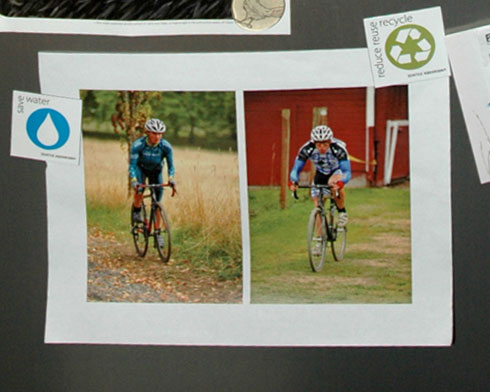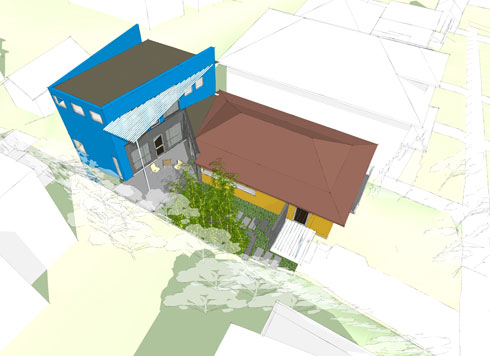 Here's another new project in the office, an addition to a residence on Capital Hill. The existing house is a tiny 750 sq. ft. bungalow on one of Seattle's steepest streets. The owners found the compact plan a perfect fit when they first moved in, but two kids later, they desperately need more room. They are drawn of the core values of modern architecture: emphasis on natural light, spaces that flow together, honest and straightforward materials and want a house that expresses that. They are comfortable making a pretty bold statement, but they also want the addition to feel comfortable in the existing fabric of the neighborhood. They are interested in sustainability that is designed in from the ground up, which led to the early decision to preserve the existing structure instead of starting from scratch on the site.
Here's another new project in the office, an addition to a residence on Capital Hill. The existing house is a tiny 750 sq. ft. bungalow on one of Seattle's steepest streets. The owners found the compact plan a perfect fit when they first moved in, but two kids later, they desperately need more room. They are drawn of the core values of modern architecture: emphasis on natural light, spaces that flow together, honest and straightforward materials and want a house that expresses that. They are comfortable making a pretty bold statement, but they also want the addition to feel comfortable in the existing fabric of the neighborhood. They are interested in sustainability that is designed in from the ground up, which led to the early decision to preserve the existing structure instead of starting from scratch on the site.
How to add onto an existing building that has a well-defined or historical style is a perennial architectural puzzle (and hip roofs are especially difficult to achieve seamless integration). In this case, we approached it by creating a clear contrast between the new and the old through form, material and color. But it's not enough to just plunk a contemporary form next to an old house and expect a real conversation to take place. In this addition, the new and old talk to each other both in how the volumes intersect and in how the two differing styles overlap.
Intersection Our early drawings all show a long, narrow addition running north-south to hold the downhill edge of the property. However, after looking at dozens of alternative schemes, we realized the potential for a very special outdoor space, between the south-facing wall of the addition, the steep hillside and the existing house. Private, yet with almost ideal sun exposure, this patio is the heart of the design but it sets up a tricky problem: we wanted to the public and private wings of the house to fit up against one another while at the same time creating a space between them.

In the rendering above, you can see how we resolved this conundrum: the charcoal-colored wall literally acts like a giant door, swinging out of the (blue) addition to carve space from the (yellow) existing house and define the courtyard. This dividing wall gets a different material and different detailing show a clear relationship between the planning and the way the house is actually made. Creating a courtyard at the joint between the new and old helps to differentiate the two volumes and separate the bedrooms from the public spaces. The slight angle of the addition's south wall also provides enough solar exposure so that a concrete trombe wall behind the south-facing glass is effective in reducing the use of conventional heating by about a third. (More on the passive solar design of this house in a later post)
Overlap While they are separated by their overall form, the old and new portions of the house are tied together by elements that extend the language of one style into the other portion of the house. The largest example of this is the secondary level of detailing we are developing for both structures. The large-scale metal sun canopy of the addition is repeated at a smaller scale as a canopy at the front entry and then inside the original house as a pair of room-divider screens that create separate zones within the loft-like space (and incidentally help act as shear walls).


The language of filtering light through parallel vertical columns even extends the site design: the wide sideyard on the west creates the perfect bamboo garden outside the kitchen's horizontal slot window and a verdant path to the courtyard.














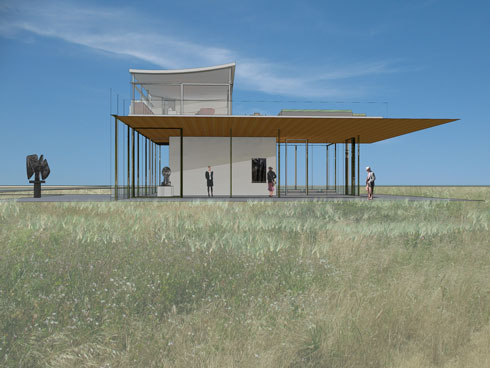
 We've completed the first round of design on our CAST architecture case study backyard cottage.
We've completed the first round of design on our CAST architecture case study backyard cottage.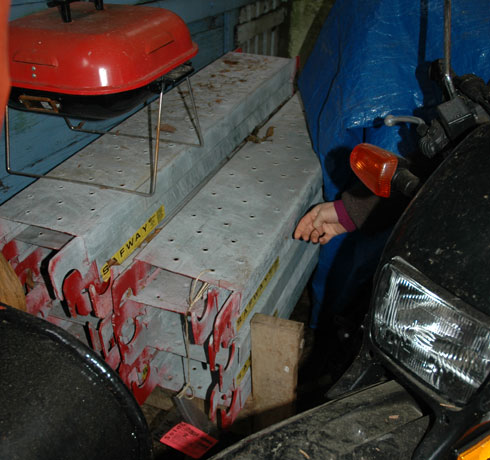
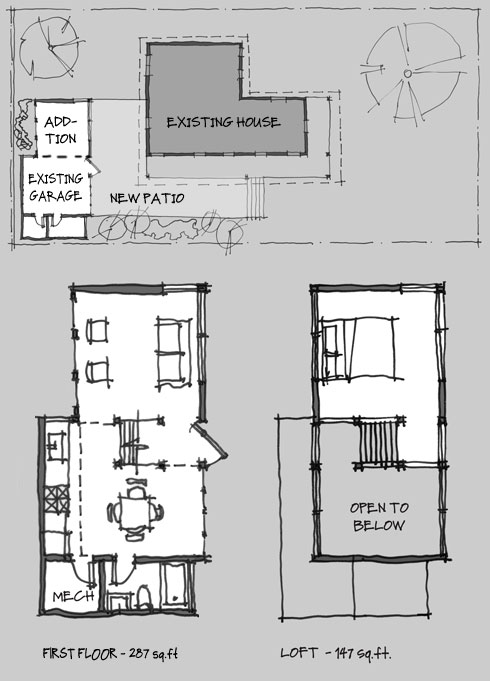



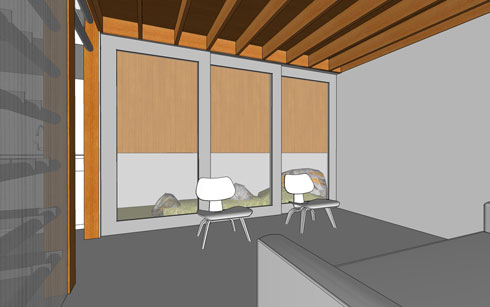
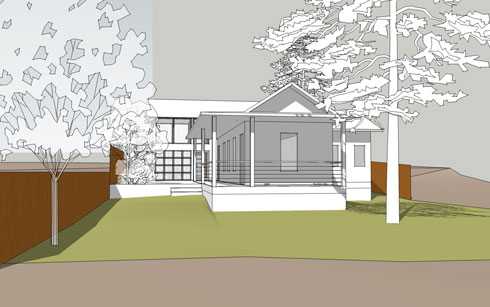
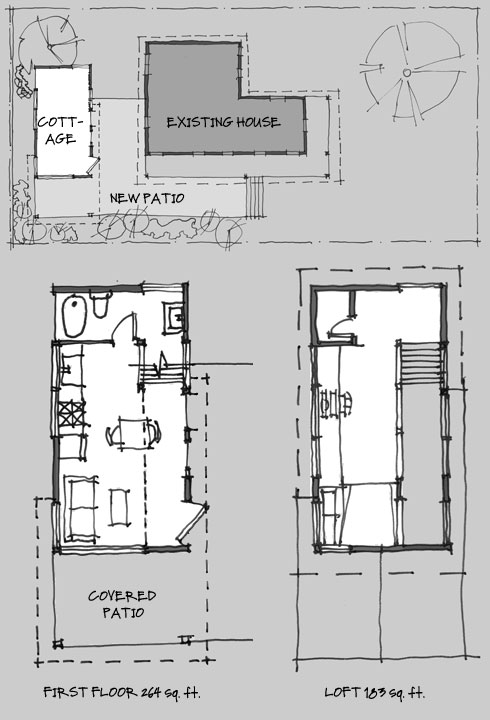
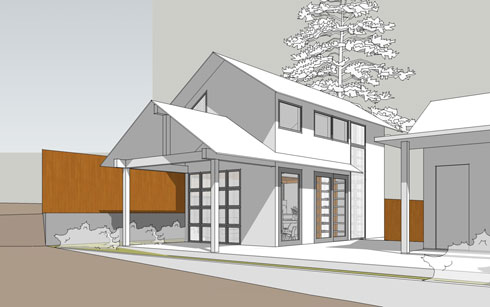 View from the SE
View from the SE
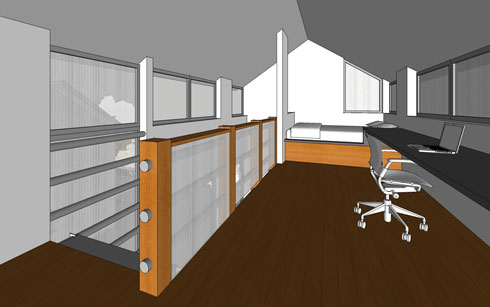
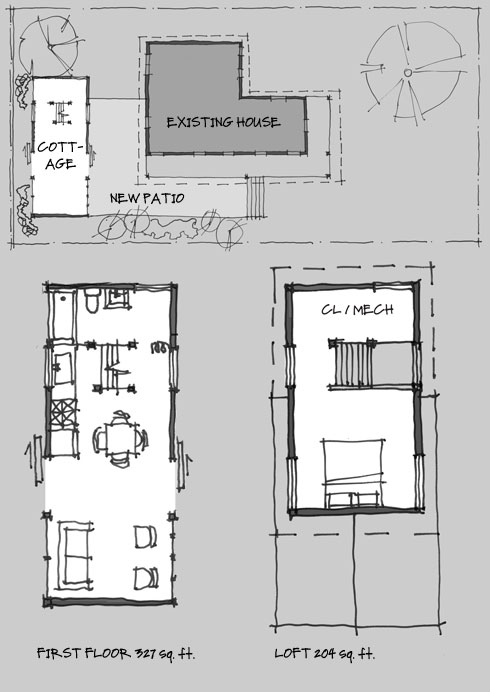
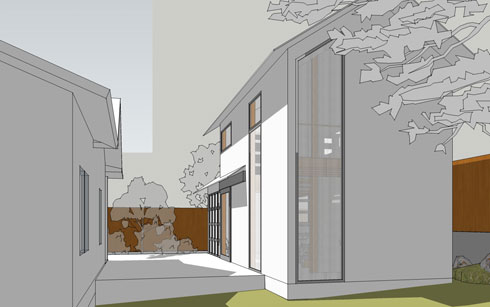
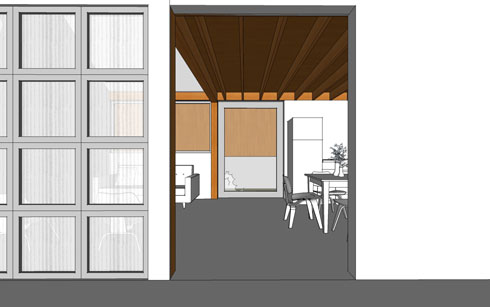
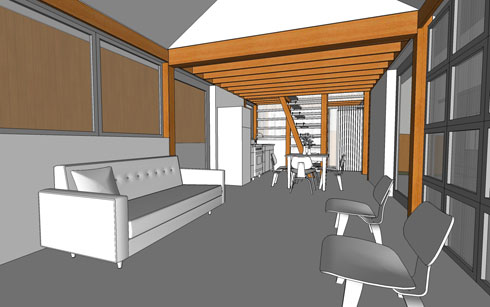
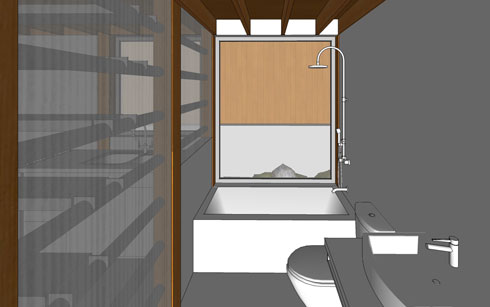
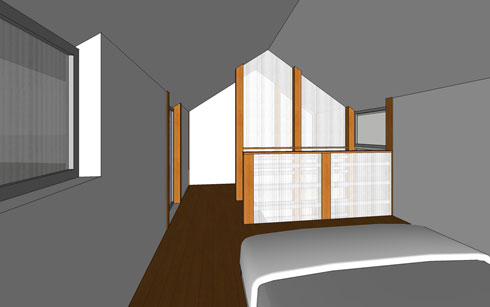
 We can't seem to get enough of Seattle's new citywide backyard cottage ordinance...
We can't seem to get enough of Seattle's new citywide backyard cottage ordinance...
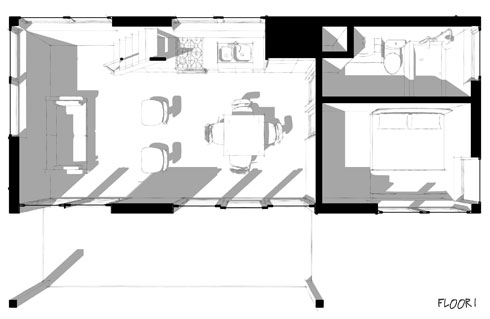

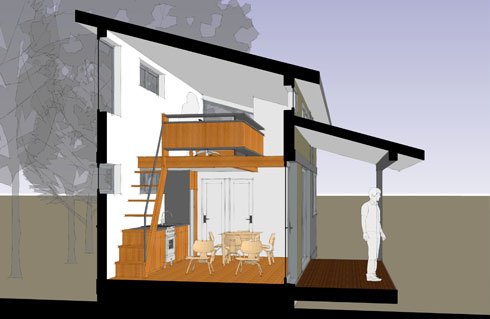

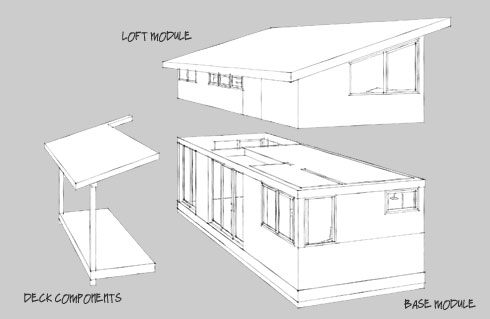
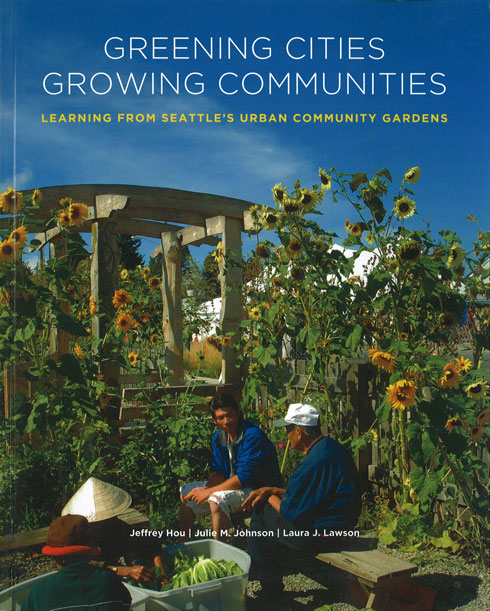 We are very excited to see
We are very excited to see  Our installation just got linked on the
Our installation just got linked on the 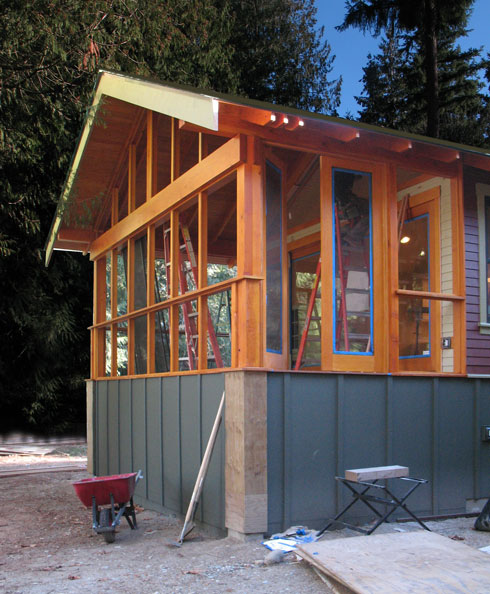 We have been working on a house remodel in Sammamish for the last year and a half and it is finally closing in on completion, so I fiqured I post some construction photos from my site visit this morning. Â One my favorite elements is a screen porch off the dining room, partially because it is a great example of the client's vital participation in the process, and part because it is going to be such a wonderful place to hang out. Â The screen porch was born in programming when we were discussing how half the family loved hanging out outdoors, but the other half hated the bugs. Â In order to keep the family together, the screen porch was the simple solution. Â Connected to the dining room via a large panel siding door, framed with care so that the structure is all exposed, it cuts to the soul of the house they wanted: Â engaged with the outdoors, family-centric, with a elegant simplicity that highlighted the materials and craft.
Next summer: the landscaping with a stairway that bridges across a simple water feature.
We have been working on a house remodel in Sammamish for the last year and a half and it is finally closing in on completion, so I fiqured I post some construction photos from my site visit this morning. Â One my favorite elements is a screen porch off the dining room, partially because it is a great example of the client's vital participation in the process, and part because it is going to be such a wonderful place to hang out. Â The screen porch was born in programming when we were discussing how half the family loved hanging out outdoors, but the other half hated the bugs. Â In order to keep the family together, the screen porch was the simple solution. Â Connected to the dining room via a large panel siding door, framed with care so that the structure is all exposed, it cuts to the soul of the house they wanted: Â engaged with the outdoors, family-centric, with a elegant simplicity that highlighted the materials and craft.
Next summer: the landscaping with a stairway that bridges across a simple water feature.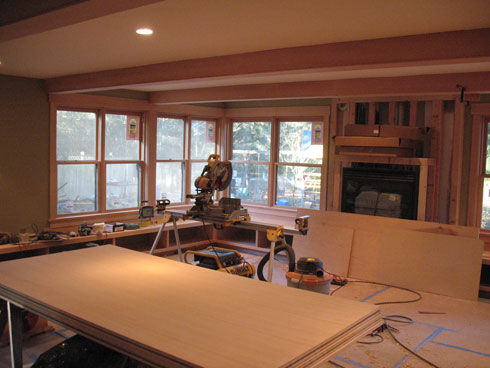 The family room is also starting to come together. Â The room has a band of 6' windows that wrap around three walls with bench seats below, a slate fireplace, and a coffered ceiling. Â The bench seats will have leather cushions and storage underneath for games etc, making it the perfect cozy hang out spot.
The family room is also starting to come together. Â The room has a band of 6' windows that wrap around three walls with bench seats below, a slate fireplace, and a coffered ceiling. Â The bench seats will have leather cushions and storage underneath for games etc, making it the perfect cozy hang out spot.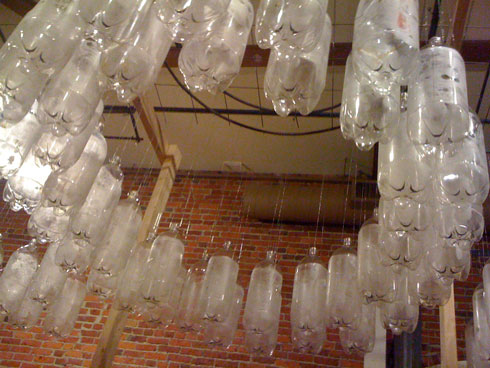 We are working on a collaborative art installation for the Nord Building's upcoming Alley Party, sponsored by two non-profits, Feet First and the International Sustainability Institute.
We are working on a collaborative art installation for the Nord Building's upcoming Alley Party, sponsored by two non-profits, Feet First and the International Sustainability Institute. Greenwood resident Kate Lichtenstein contacted us last spring to help her design a backyard studio / guest house for her modest 650 square foot 1920's one bedroom home (shown above). While the home's scale fits nicely with Kate's desire to have a simple and ecologically responsible lifestyle it falls a little short when it comes to a rough and ready workshop space for art, bicycle repair, ski tuning and building projects. Kate's home also lacks the space for a home office / guest room - something that she would like to integrate into the new structure.
Greenwood resident Kate Lichtenstein contacted us last spring to help her design a backyard studio / guest house for her modest 650 square foot 1920's one bedroom home (shown above). While the home's scale fits nicely with Kate's desire to have a simple and ecologically responsible lifestyle it falls a little short when it comes to a rough and ready workshop space for art, bicycle repair, ski tuning and building projects. Kate's home also lacks the space for a home office / guest room - something that she would like to integrate into the new structure.